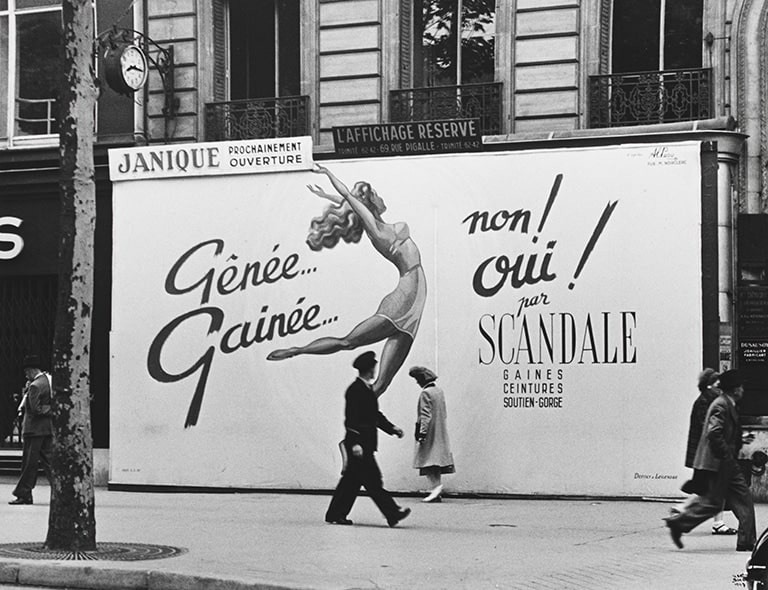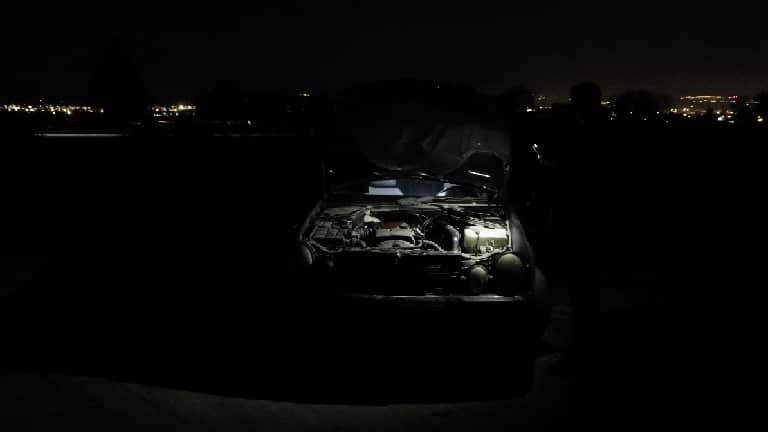Solitude Mentale [Mental Solitude]
![Solitude Mentale [Soledad mental] Solitude Mentale [Soledad mental] © COLECCIONES Fundación MAPFRE](/media/arte-cultura/colecciones/salvador-dali/fm000271.jpg)
Salvador Dalí
Solitude Mentale [Mental Solitude], 1932
© Fundació Gala-Salvador Dalí. VEGAP. Madrid, 2021.
Fundación MAPFRE COLLECTIONS
1932, year 1930 – 1940
Entry date: 2006
Technique
Ink on paper
Dimensions
Printed area: 22.4 × 30.8 cm (8 13/16 × 12 1/8 in.)
Frame size: 47.5 x 56 x 4 cm
Paper size: 23 × 32 cm (9 1/16 × 12 5/8 in.)
Inventory
FM000271
Description
Having followed the innovations of Surrealism from Spain, Dalí arrived in Paris in April 1929 and was introduced by Joan Miró to the movement’s milieu. By the end of 1929, he was so well integrated in the group that André Breton wrote the foreword to the catalog for the artist’s first exhibition in Paris, at the Geomans Gallery. One of the paintings on display, The Enigma of Desire, featured many of the typical themes of Dalinian iconography, such as the vast empty spaces reminiscent of the plains of the Alt Empordà region in Catalonia, and the rounded and perforated shapes, vaguely organic, that show his fascination with the softness and malleability of objects, related to his obsession with the metamorphoses of decomposing bodies.
In his drawings from 1929, preparatory to the painting, there is already a form that literally anticipates the one that would dominate the drawing in this collection. That soft shape, cleft in the center, with various holes that reveal the horizon, ends up resembling a strange face, with one eye suggested by a circular hole crossed by a cloud, a clear example of Dalinian anamorphism. Along with this large, prostrate face, Mental Solitude contains other elements typical of this moment of consonance with Bretonian orthodoxy: the cypress motif, associated with death in Mediterranean culture and a typical feature of the landscape of the Empordà region, which attracted Dalí as much for its phallic shape as for its allusion to a life beyond the tangible; and the melting watch, an iconic motif in the Dalinian universe which had a tremendous impact when it appeared in The Persistence of Memory (1931), one of the key pieces of Surrealism. According to some interpretations, Dalí used the soft or melting watches to question the conventional concept of time as an objective reality, very much in consonance with Einstein’s theories of relativity. The repetition of some of his compositional elements, which decrease in size in reference to their spatial distance, also calls into question the traditional concept of space by altering the line of the horizon and breaking the overall perspective of the image.
Between 1932 and 1943, this drawing belonged to André Breton. On his arrival in Paris, following a triumphantly scandalous presentation of his film Un Chien Andalou, in collaboration with Luis Buñuel, Dalí was hailed as the great new hope of Surrealism by Breton, alarmed that the movement was showing signs of languishing: nobody other than Dalí was capable of illustrating the interchange between the tangible and intangible worlds, between sleep and wakefulness. However, ideological disagreements would soon emerge, largely stemming from Breton’s consideration of surrealist irrationality as a means to achieve social revolution, while for Dalí it constituted an end in itself. These discrepancies led to the noisy expulsion of Dalí from the movement in 1934. In the acrimonious political context of the 1930s, it is interesting to note that Breton kept the drawing in his collection until 1943, considering it, despite everything, as one of the emblematic pieces of the capacity of surrealism to create dreamlike images. In 1943, Breton, now a refugee in New York, sold the drawing to the young and prestigious gallerist Pierre Matisse, the painter’s son. While in New York, Breton witnessed the discrediting of surrealist ideas by a Dalí who was obsessed with social and economic success, for whom the French doctor would coin the anagram ‘Avida Dollars’. Perhaps the straw that broke the camel’s back was the news of the imminent appearance of Dalinian melting watches in the November 1943 issue of Vogue magazine.
[María Dolores Jiménez-Blanco]
400 obras de Salvador Dalí, 1914-1983, cat. exp. Madrid, Ministerio de Cultura/Generalitat de Catalunya, 1982, 1983.
ABADIE, Daniel, Salvador Dalí: rétrospective 1920-1980, cat. exp. Paris, Centre Georges Pompidou, 1979.
DESCHARNES, Robert (ed.), Oui: the parnoid-critical revolution. Boston, Exact Change, 1998.
DI CAPUA, Marco, y BRU DE SALA, Xavier, Salvador Dalí: su vida, su obra. Barcelona, Caroggio, 2003.
FANÉS, Félix, Salvador Dalí: la construcción de la imagen, 1925-1930. Madrid, Elecat, Fundación Gala Salvador Dalí, 1999.
FANÉS, Félix, Dalí. Cultura de masas, cat. exp. Barcelona, Fundación La Caixa, Fundación Gala-Salvador Dalí y MNCARS, 2004.
FERNÁNDEZ-BRASO, Miguel, Dalí: pinturas, acuarelas y dibujos, cat. exp. Madrid, Galería Juan Gris, 1997.
GAILLEMIN, Jean-Louis, Salvador Dalí: désirs inassouvis: du purisme au surréalisme, 1925-1935. Paris, Nueva York, Le Passage, 2002.
GIBSON, Ian; SANTOS TORROELLA, Rafael; FANÉS, Félix; BONET, Juan Manuel; ADES, Dawn; SÁNCHEZ VIDAL, Agustín, Dalí joven (1918-1930), cat. exp. Madrid, Museo Nacional Centro de Arte Reina Sofía, 1994.
MICHLER, Ralf, y LÖPSINGER, Lutz W. (ed.), Salvador Dalí: catalogue raisonné. Múnich, Prestel, 1994-1995.
RAMÍREZ, Juan Antonio, Dalí: lo crudo y lo podrido. Madrid, Antonio Machado, 2002.
SÁNCHEZ VIDAL, Agustín, Salvador Dalí. Madrid, Fundación MAPFRE, 2007.
SANTOS TORROELLA, Rafael, La miel es más dulce que la sangre: las épocas lorquiana y freudiana de Salvador Dalí. Barcelona, Seix Barral, 1984.
SANTOS TORROELLA, Rafael, Dalí: época de Madrid: catálogo razonado. Madrid, Publicaciones de la Residencia de Estudiantes, Ayuntamiento de Madrid, Área de las Artes, 2004.
SANTOS TORROELLA, Rafael, El primer Dalí, 1918-1929: catálogo razonado. Valencia, Madrid, Institut Valencià d’Art Modern, Publicaciones de la Residencia de Estudiantes, D.L. 2005




